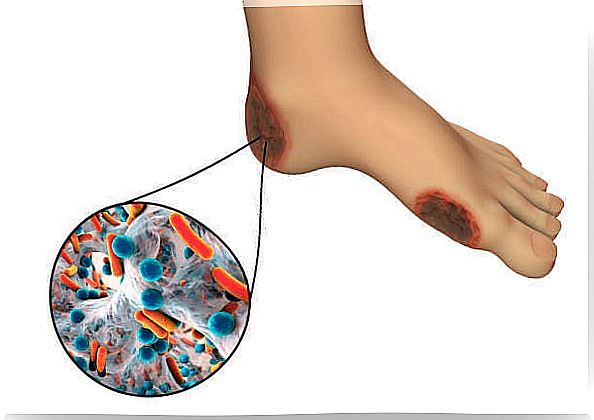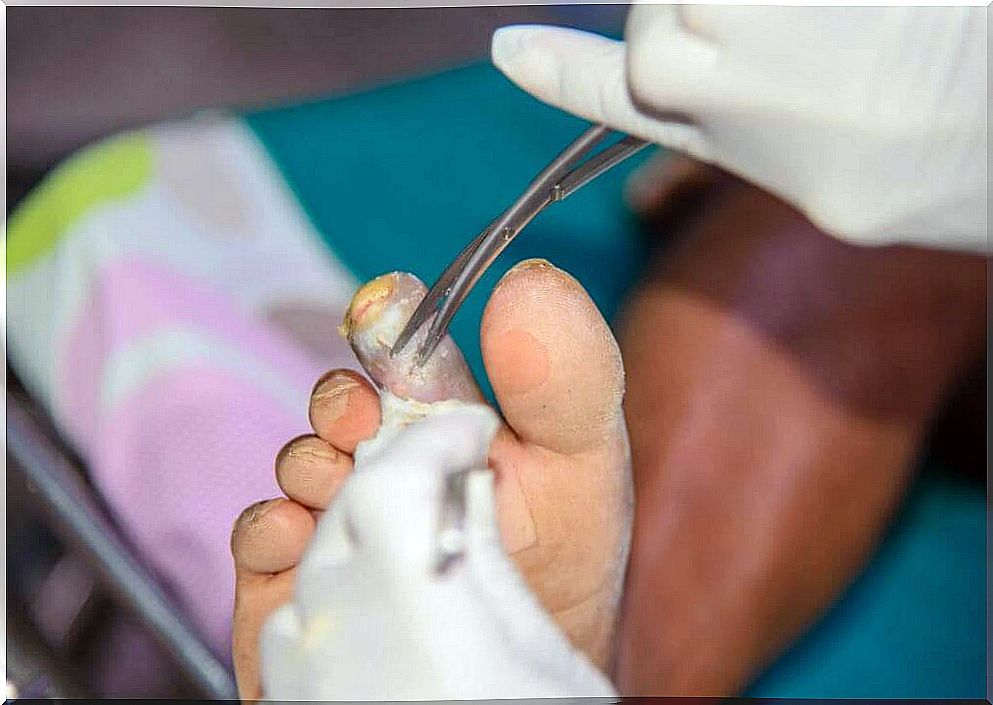Everything You Need To Know About Diabetic Gangrene
Diabetic gangrene is a serious problem that can lead to limb amputation and death. People with diabetes tend to develop gangrene due, among other things, to a weakened immune system.

We talk about diabetic gangrene when necrosis or tissue death occurs as a result of uncontrolled diabetic neuropathy. This is usually a condition that results in cases of what is called “diabetic foot”.
The exact incidence of diabetic gangrene is not known. However, some studies suggest that 30% of infections associated with diabetic foot exhibit necrotizing features. There is no certainty about this figure, since in other studies the percentage does not exceed 8%.
Gangrene refers to the breakdown of dead tissue, regardless of its causes. The word comes from a Greek root meaning “to gnaw”. In the case of diabetic gangrene, the specific cause of this process is diabetes.
What is gangrene?

Gangrene is a serious infectious disease. It is characterized by the presence of edema, toxemia, gas formation and necrosis, or tissue death, in the affected area. If not treated immediately, it can lead to death.
Gangrene occurs when a wound becomes infected or tissue is destroyed. This blocks, or greatly reduces, blood flow to a certain area of the body. When this occurs, infection is facilitated, most often by bacteria of the Clostridium perfringens family .
The main cause of gangrene is the destruction of the vascular network due to the freezing of the blood flow. The germs act on hemoglobin and other proteins, causing decomposition and a characteristic blackish color in the area.
What is diabetic gangrene?
Diabetic gangrene occurs because the body does not make enough insulin or is resistant to the effects of insulin. Thus, a long-term high blood sugar level damages the blood vessels and prevents the blood flow from passing to any part of the body.
On the other hand, diabetes mellitus is a disease that can affect a person’s immune system. It also causes long-term nerve damage. The latter is called peripheral neuropathy. This, in turn, results in a significant decrease or loss of sensitivity.
Pain is a warning sign that may not work in people with diabetes. This, together with a weakened immune system, makes wounds relatively easily infected. Overall, this promotes the growth of bacteria and other microorganisms. From there, to diabetic gangrene, there is only one step.
Diabetics are particularly vulnerable to infections of the lungs, skin, feet, urinary tract, genital area and mouth. Foot infections are very common, as these extremities are prone to bumps and bruises in everyday life.
Diabetic feet and gangrene

Almost half of people with diabetes suffer from neuropathy in their feet. This causes the walls of the arteries in this area to harden, making them narrower and blocking the blood supply. Diabetic gangrene is the greatest risk when this condition exists.
Wagner proposed a system for classifying the severity of diabetic foot lesions. Here it is :
- Level 0 . When the skin of the feet is intact
- Level I. Presence of a superficial foot ulcer
- Level II. The foot ulcer gets deeper
- Level III. The injury involves a bone or presence of a deep abscess
- Level IV. Diabetic gangrene starts in the front of the foot
- Level V. Gangrene also involves the heels and the back of the foot
Prevention of diabetic gangrene
As diabetics are more prone to gangrene, it is very important to take preventative measures to prevent this from happening. The most important of these is constant monitoring of blood sugar levels.
Diabetics should also check their feet frequently. One should also be aware of any abnormalities in other parts of the body. Even minor injuries or infections should be a reason to see a doctor.
Likewise, it is very important that they maintain excellent foot hygiene and get frequent rest. Wear appropriate shoes and see your doctor at least once a year. Remember, diabetic gangrene can be fatal.









